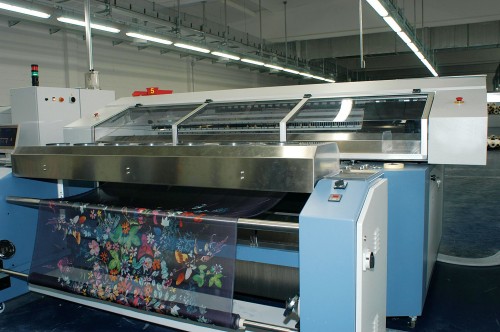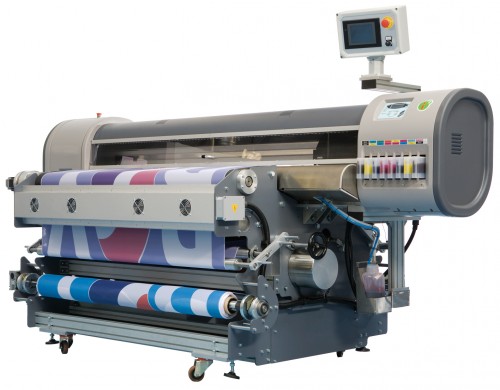 By Ken Bach
By Ken Bach
Fabric graphics are hotter than ever. Both the quality and the variety of digitally printed textile-based displays are on the rise today, due to the development of new printing technologies and display hardware. There are now several popular ways to print both common and uncommon applications on fabrics, all of which emphasize the differences from printing on vinyl.
Printing onto fabrics dates back hundreds of years, with the earliest applications involving processes like block, copperplate, roller and stencil printing. It wasn’t until the development of digital dye sublimation printers in the early 1990s that textiles and digital printing began to converge. And with the development of digital direct-to-textile printers around 2006, fabric-based signage became easy and viable for more shops to produce.
This trend has since seen significant growth. Textiles are now digitally printed for a variety of markets, including signage, apparel, furniture, theatre, trade shows, galleries, museums, retail, photo studios, schools, health care and special events.
A sign shop can print fabric-based banners, trade show backdrops, backlit displays and point-of-purchase (POP) graphics and even expand into other applications, like table covers, flags, tents, upholstery, floor mats, temporary/soundproof walls, sails and kites.

With the development of digital direct-to-textile printers since 2006, soft signage has become easier for more shops to produce.
Dye sublimation has become widely used for banners and trade show graphics in recent years due to tighter environmental regulations. Compared to their vinyl counterparts, they are easier to ship, wash, reuse and recycle and contain none of the volatile organic compounds (VOCs) many cities have prohibited in certain circumstances. They are also proving more popular than vinyl for photography backdrops because of their non-glare finish.
By 2009, the global digital textile printing industry was worth about $200 million worldwide. By the end of 2014, it is expected to reach $1.6 billion, with some 52,800 digital textile printers installed around the world. Much of that growth has been driven by the signage and display markets.
Methods of attachment
While there are technically many methods for printing graphics on textiles, there are ultimately only two ways to attach ink to fabric. One is to glue the ink onto the fabric; this is the case with solvent-based, pigment-based, durable aqueous ‘latex’ and ultraviolet-curable (UV-curable) inks. Another is to bond the ink chemically into the fabric’s fibres; this is how dye sublimation, acid and reactive inks are processed.
Glue-based bond
For the first method, the inks need ‘binders’ to serve as the glue. In many cases, heat must be applied to activate the binder. The ‘feel’ of the fabric will change, depending on the strength of the binder. Latex inks tend to be among the best in this class, whereas UV inks may become ‘hidden’ in the fabric and not be cured properly, leaving an odour, and solvent-based inks do not tend to look as good.
Advantages of inks with glue-based bonds are lower upfront costs, versatility with many types of fabrics and compatibility with printers commonly found in sign shops. Among the disadvantages, the resulting images can be scratched or rubbed off to various degrees, colour brilliance may be poor due to ink settling around the fibres and ‘pass-through’ is not very good for demanding applications like flag production.





